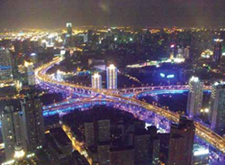As the axiom goes, in 1810 the savvy entrepreneur should have gone to London, in 1910 they should have been in New York, and in 2010 they should be in Asia. Having recently returned from Shanghai, China and the World’s Fair (Expo 2010), the saying holds true. And it particularly points to a bright and lucrative future for several types of AV products. The challenge comes in figuring out how to harness the ideas and momentum generated from Expo 2010 and build business from them.
Expo 2010 opened May 1, 2010 and runs for six months on more than 5.28 square kilometers of land, straddling the Huangpu river in Shanghai. Over 120 pavilions are split between those sponsored by different countries and others created by corporations (nearly all of them Chinese). Expo 2010’s theme is “Better City, Better Life,” representing the common goal of improving living conditions in urban environments, with a nod toward sustainable development.
If you have never been to a World’s Fair, this is the one to attend. China has thrown billions of dollars into creating this showcase, and has promoted it ad nauseam across the country. But be prepared to wait. Recently, over 500,000 guests have filed into the site on peak days (“slower” days only play host to about 300,000). Wait times for popular pavilions easily run three to four hours. The U.S. and China pavilions have seen queue times up to six hours. We were there for three days and only saw about half of what we wanted to see. Even with a guide from one of the installation firms (who had the best cut in line pass we could ever hope for), we only could see six pavilions before we were wiped out in the extreme heat and humidity of a normal May day in Shanghai.
Historically, World’s Fairs were a showcase for the latest and greatest in technology, and we did see some trends that you might be able to capitalize from:
LED is here to stay. LED lights permeated the Expo. And beyond. Several of Shanghai’s elevated highways are outfitted with colorchanging LED lighting beneath the roadway, and many of the skyscrapers downtown feature LED lighting and displays. The Expo seems to have legitimized the use of LED lighting as a decorative element on a scale unseen elsewhere.

People in Asia want to be entertained just as much as Westerners do. With such long waits for shows, most pavilions had some type of outside entertainment. A video-projected preshow was standard, and outdoor ethnic stage performances were everywhere. The technology wasn’t cutting-edge, but it was the quantity that counted. The Expo entertains its guests with thousands of projectors and video displays, and probably tens of thousands of loudspeakers.
“Green” will not succeed without Asia. All of our talk about the greening of our systems and buildings will have very little overall impact on anything unless we can help bring the rest of the world along with us. The Expo is a great example of a major country finding itself on the road to cleaning up its emissions. If this is our goal locally, then we really need to focus on helping the emerging economies at least get to where we are.
While Expo 2010 is only temporary it does point to future opportunities to capitalize off these trends, especially in Asia, but also for future Expos. But how do you do that?
If you haven’t already, start planning now for the 2012 Expo in South Korea and the 2015 Fair in Milan. The best way to get involved is through the design and development teams for the USA, Canada, or other major international or corporate pavilion. This industry relies heavily on referrals, so you need to utilize your existing contacts and partners more than usual. If you are not lucky enough to have the right connections right away, you will need to start working to find an “in” with the local promoters and developers. An excellent resource for learning about the workings of an Expo is to check out theexpobook.com.
Steven J. Thorburn (SJT@TA-inc.com), PE, LEED-AP is co-founder of Thorburn Associates, an acoustical, technology, and lighting design firm.
In Brief
LG Debuts New Site
ENGLEWOOD CLIFFS, NJ—LG Electronics has unveiled the new face and URL for its commercial website, LGSolutions. com. As LG’s core vertical markets continue to evolve and expand, LGSolutions. com will make it easier for customers to identify which digital assets match a commercial environment— pairing easy to scroll through navigational bars with convenient landing pages that provide ideas for signage or display solutions. Quick links to customer case studies, articles, brochures, press releases, and newsletters are now located on the home page for easy access and sharing.
Draper Great Place To Work
SPICELAND, IN—Draper has been named to a list of the 70 best places to work in the state of Indiana. The annual rankings are compiled by the Indiana Chamber of Commerce, which recognizes the state’s top employers in two categories: companies with 25-249 employees, and companies having 250 or more employees. The top companies are determined through employer reports and comprehensive employee surveys. Draper was among the 42 companies named to the list of larger employers, and was one of only two manufacturers to make the 2010 list.
Leviton Launches BIM Library
MELVILLE, NY—Leviton will support Building Information Modeling (BIM) by offering a library of free downloadable BIM objects. Leviton’s library of objects, which currently includes patch panels, fiber enclosures, wallplates, connectors, and cable management, are available for both Autodesk Revit and Bentley’s MicroStation software. Leviton plans on regularly adding new products to the library.
